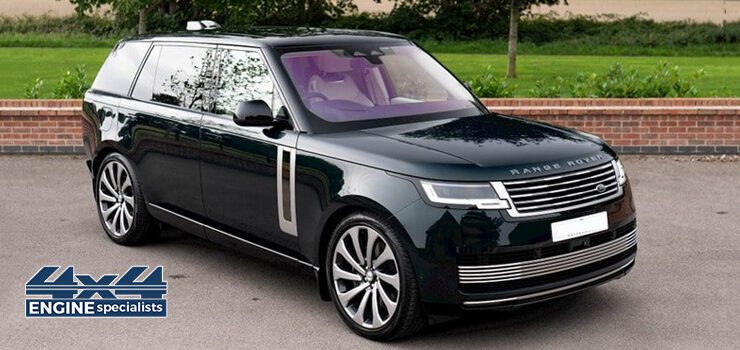The Range Rover has long been synonymous with luxury, performance, and innovation in the automotive world. Among its various engine options, the 2.0-liter engine has garnered considerable attention for its balance of power and efficiency. As the automotive industry continues to evolve, so too does the technology behind these engines. The future developments for the Range Rover 2.0 engine are expected to focus on enhancing performance, improving efficiency, and integrating new technologies. We explores the anticipated advancements in engine design, replacement options, and the evolving role of reconditioned engines in meeting future demands.
Advancements in Engine Technology
The Range Rover 2.0 engine is poised for several advancements aimed at boosting performance and efficiency. One of the primary areas of development is the integration of hybrid technology. Future versions of the 2.0 engine are expected to incorporate mild-hybrid or plug-in hybrid systems, which will provide an additional power boost while improving fuel economy and reducing emissions. These hybrid systems will likely include advanced energy recovery systems that capture braking energy and store it for later use, enhancing overall vehicle efficiency.
Moreover, advancements in turbocharging and variable valve timing are set to further refine engine performance. Newer technologies, such as variable geometry turbos and more precise electronic control systems, will allow for better power delivery and responsiveness. This means that the 2.0 engine will not only be more powerful but also more adaptable to different driving conditions, enhancing both performance and driver experience.
Improvements in Fuel Efficiency
Fuel efficiency remains a crucial focus for automotive manufacturers, and the Range Rover 2.0 engines is no exception. Future developments will likely include more advanced fuel injection systems, such as direct fuel injection, which offers greater control over the combustion process. This technology can improve fuel atomization and combustion efficiency, leading to better mileage and reduced emissions.
Additionally, engine downsizing strategies will continue to be explored. By optimizing the 2.0 engine’s design, engineers can achieve higher power outputs without increasing the engine’s size. This approach not only contributes to better fuel economy but also aligns with the industry’s shift towards smaller, more efficient engines. The incorporation of lightweight materials in engine construction will further aid in reducing overall vehicle weight, which in turn enhances fuel efficiency.
Enhanced Emission Control
With increasingly stringent emission regulations, future developments in the Range Rover engine will focus heavily on emission control technologies. Innovations in catalytic converters and particulate filters will play a critical role in meeting these standards. Enhanced after-treatment systems will be designed to reduce harmful emissions, including nitrogen oxides (NOx) and particulate matter (PM).
In addition to hardware improvements, software-based solutions such as advanced engine management systems will be implemented. These systems will use real-time data to optimize combustion and reduce emissions across various driving conditions. As the automotive industry moves towards zero-emission vehicles, the 2.0 engine will likely see developments in electrification, including full electric and hydrogen fuel cell variants.
Engine Replacement Trends
As with any automotive component, the Range Rover 2.0 engine may require replacement over its lifespan. Engine replacement trends are shifting towards more cost-effective and environmentally friendly solutions. One notable trend is the increasing availability of reconditioned engines. These engines are refurbished to meet or exceed original specifications, offering a reliable alternative to brand-new replacements.
Reconditioned engines offer several advantages, including lower costs and reduced environmental impact. By opting for a reconditioned engine, vehicle owners can extend the life of their Range Rover while minimizing waste. Additionally, advancements in reconditioning technology have improved the quality and performance of these engines, making them a viable option for maintaining the 2.0 engine’s performance.
The Role of Reconditioned Engines
Reconditioned engines play a significant role in the future of the Range Rover 2.0 engine, particularly in the context of sustainability and cost management. The process of reconditioning involves thoroughly inspecting, cleaning, and repairing engine components to restore them to a like-new condition. This process can address common issues such as wear and tear, ensuring that the engine performs optimally.
The benefits of reconditioned engines extend beyond cost savings. They contribute to environmental conservation by reducing the need for new parts and minimizing waste. As the automotive industry becomes more focused on sustainability, reconditioned engines will likely become a more prominent choice for vehicle maintenance and repair. This trend is expected to grow as technology continues to advance, further enhancing the quality and reliability of reconditioned engines.
Supply and Fit Considerations
When it comes to engine replacement or reconditioning, supply and fit considerations are crucial. The availability of high-quality parts and the expertise of technicians play a significant role in ensuring the engine’s performance and longevity. For the Range Rover 2.0 engine, sourcing genuine or high-quality aftermarket parts is essential for maintaining the vehicle’s reliability.
The fitting process also requires precision and expertise. Professional technicians who specialize in Range Rover engines will ensure that the replacement or reconditioned engine is installed correctly and tuned to the manufacturer’s specifications. This attention to detail is vital for achieving optimal performance and avoiding potential issues. As the market for engine replacements evolves, the emphasis on quality supply and professional fitting will continue to be a key factor in maintaining the Range Rover 2.0 engine’s performance.
Future of Engine Maintenance
The future of engine maintenance for the Range Rover 2.0 engine will likely involve more advanced diagnostic tools and predictive maintenance technologies. With the integration of IoT (Internet of Things) and AI (Artificial Intelligence), maintenance practices will become more proactive rather than reactive. Vehicles will be equipped with sensors that monitor engine health in real-time, alerting owners to potential issues before they become critical.
Predictive maintenance will enable technicians to address minor issues before they escalate, reducing the need for extensive repairs or replacements. This approach not only enhances the vehicle’s longevity but also improves overall driving safety and reliability. As technology advances, engine maintenance will become more streamlined and efficient, further extending the life of the Range Rover 2.0 engine.
Conclusion
The future of the Range Rover 2.0 engines is set to be marked by significant advancements in technology, efficiency, and sustainability. From the integration of hybrid systems and improved fuel efficiency to enhanced emission controls and the growing role of reconditioned engines, these developments will contribute to a more refined and eco-friendly driving experience. Engine replacement trends and the importance of quality supply and fitting will continue to shape the landscape of engine maintenance. As the automotive industry moves towards a more sustainable future, the Range Rover 2.0 engine will evolve to meet new challenges and opportunities, ensuring that it remains a symbol of luxury and performance in the years to come.


